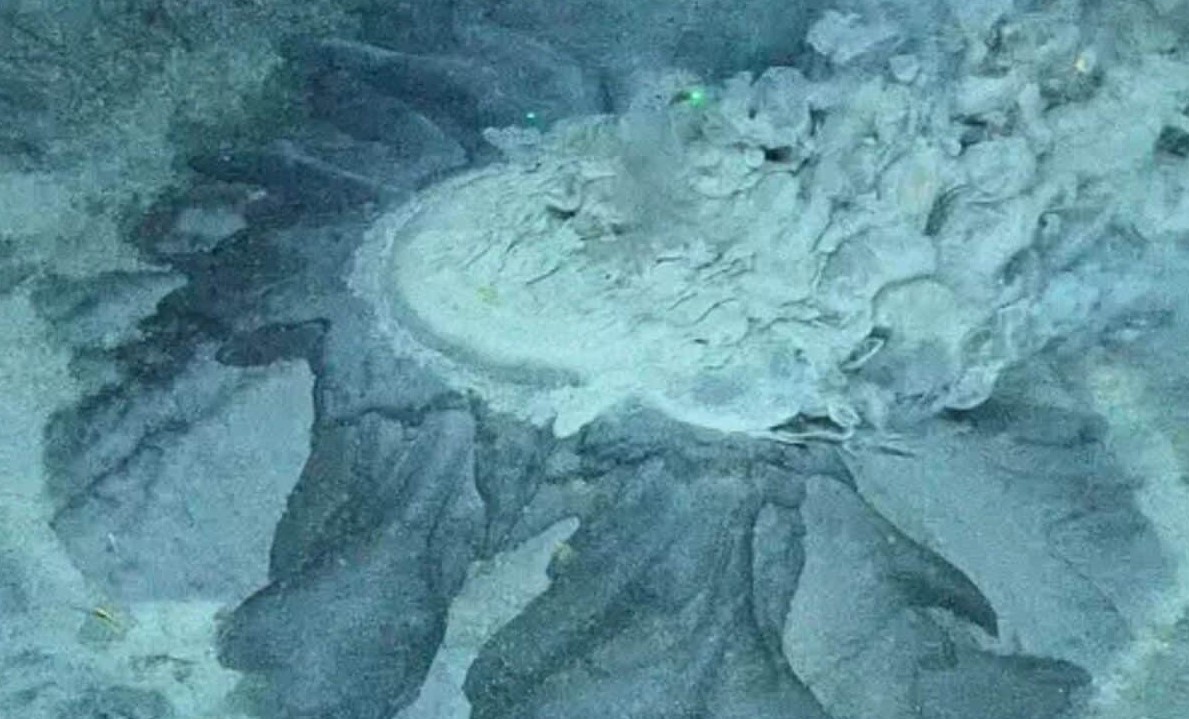Arctic Ocean – Scientists Unveil a Hidden Deep-Sea Ecosystem Beneath the Arctic Ocean
Scientists Discover an Extraordinary Ancient Formation at the Arctic Ocean’s Depths
Scientists have made a remarkable discovery deep beneath the icy waters of the Barents Sea, located in the Arctic Ocean region. They found an ancient mud volcano at a depth of 400 meters, which is reshaping their understanding of deep-sea ecosystems. This structure, called the Borealis Mud Volcano, was uncovered during a 2023 expedition led by UiT – The Arctic University of Norway. What’s truly surprising about this find is that, despite its location in one of the harshest environments on Earth, the volcano is rich with life.
Unlike typical land-based volcanoes, which erupt with lava, mud volcanoes release methane and fluidized sediments. The Borealis Mud Volcano’s methane-rich fluids have led researchers to believe that it may be an important habitat for Arctic marine species. While deep-sea environments are often thought to be barren, the volcano seems to be providing a sanctuary for life forms that depend on its warmth and the nutrients released by the gases. This discovery could change the way scientists think about biodiversity in the deep sea.
Also Read- 25 Future Technology Megatrends and Predictions- Tech That Shapes Our World
Mud volcanoes, like the Borealis Mud Volcano, are unusual geological features. Instead of the fiery eruption of molten rock, they release a mix of methane, fluids, and sediments, shaping the seabed around them. The volcano was first discovered using an advanced remotely operated vehicle (ROV) by the research team. High-resolution images and videos revealed that the volcano’s crust and crater formations offer both shelter and food for marine life. This is especially fascinating given the cold temperatures of the surrounding seabed, which usually hover around 4°C. The volcanic system raises the temperature of nearby waters to about 11.5°C, creating a microhabitat that some marine species might rely on for survival.
What makes the Borealis Mud Volcano even more intriguing is its role in creating a hidden ecosystem. Despite the harsh conditions, marine life is flourishing in this unique environment. Scientists discovered various organisms living on the volcanic crusts and in the surrounding sediments. The warmth and chemical nutrients released from the volcano appear to support microbial communities, which in turn sustain a web of other marine species. This type of ecosystem challenges the common belief that volcanic vents are too extreme to support life.
Unlike hydrothermal vents, which are powered by heat from the Earth’s mantle, mud volcanoes like the Borealis rely on gases trapped in the seafloor, gradually releasing them over time. This steady release of energy might be why the volcano can support life more sustainably than other deep-sea environments that rely on more volatile heat sources. The long-term stability of this process creates an ideal setting for marine organisms to thrive.
Also Read – Top 14 unpredictable inventions which changed the world
The discovery of the Borealis Mud Volcano also offers new opportunities for studying how methane emissions from the seafloor influence ocean chemistry and climate. Methane is a potent greenhouse gas, and while it naturally escapes from the ocean floor, ecosystems like this one may help trap and cycle these emissions, potentially affecting climate regulation. The team’s findings suggest that deep-sea environments may play a more significant role in the Earth’s climate system than previously thought.
This breakthrough is especially relevant in the context of climate change. As Arctic ecosystems are impacted by global warming, understanding how marine life adapts to extreme conditions is crucial. The Borealis Mud Volcano may hold important clues about how species survive in challenging environments. Furthermore, it raises intriguing questions about whether similar ecosystems could exist on other planets or moons with subsurface oceans, such as Europa or Enceladus.
The Arctic Ocean
Looking ahead, this discovery is just the beginning. As researchers continue to study the site, they hope to learn more about how long the volcano has been active, which species depend on it, and whether similar formations exist elsewhere on the seafloor. To explore these uncharted areas, scientists plan to expand their deep-sea exploration efforts in the Arctic using advanced ROVs and autonomous vehicles. This will help them map the ocean floor and uncover other hidden ecosystems, deepening our understanding of life in extreme environments.
The Borealis Mud Volcano serves as a reminder of how much remains unknown about the deep ocean. Even in one of the most inhospitable regions on Earth, life has found a way to thrive. This discovery challenges our assumptions about where life can exist and offers a new perspective on how ecosystems can develop in unexpected places. The more scientists explore, the more they uncover about the mysteries of the deep sea.
Follow us on Google News – GoogleNews/Ghoomketu.in
